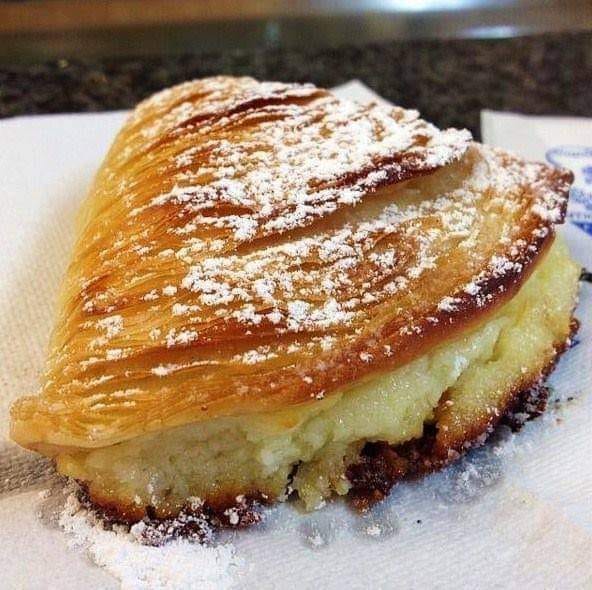Origins of Sfogliatella Napoletana:
The tale of the Sfogliatella Napoletana dates back to the early 18th century, where it is believed to have been created by the nuns of the Santa Rosa Convent in Conca dei Marini, near the Amalfi Coast. These nuns were known for their culinary prowess, and they used their baking skills to create heavenly pastries, including the original Sfogliatella.
The name “Sfogliatella” itself is derived from the Italian word “sfogliare,” which means to leaf or layer, a reference to the pastry’s characteristic multiple layers of thin, crispy dough. The “Napoletana” part of its name, of course, points to its Neapolitan origins.
A Pastry Like No Other:
What sets the Sfogliatella Napoletana apart is its unique preparation and intricate layers. There are two main variations of this delightful pastry: “Sfogliatella Riccia” and “Sfogliatella Frolla.”
Sfogliatella Riccia: This version is known for its multi-layered, flaky pastry that resembles a shell, with a distinct shell-like appearance, giving rise to its alternate name, “lobster tail.” It’s filled with a luscious, sweet ricotta cheese mixture, often scented with orange blossom water, cinnamon, and candied citrus peel.
Lemon Sfogliatella Frolla: A Sweet Slice of Italy
Sfogliatella Frolla: In contrast, the Sfogliatella Frolla boasts a smoother, more delicate crust, almost like a shortcrust pastry. Its filling is creamy, typically featuring a blend of ricotta, sugar, eggs, and vanilla.
Read more
ADVERTISEMENT

